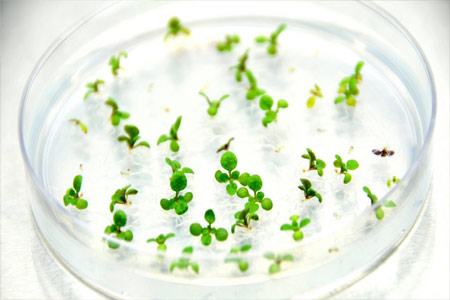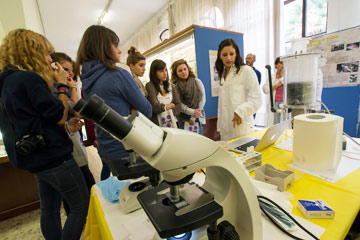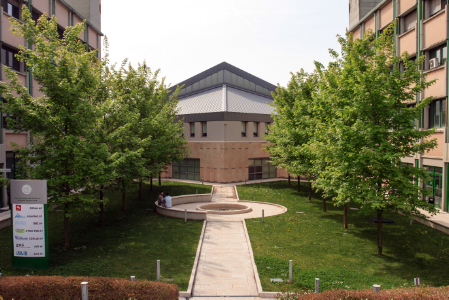Iron (Fe) is the micronutrient required in the largest amount by plants and plays a key role in relevant metabolic processes. Although its relatively high abundance in the earth’s cultivated soils Fe - that is scarcely bioavailable - often limit crop production especially in calcareous soils, which cover over 30% of the Earth’s land surface, in particular in arid and semi-arid regions. From the 1950s plants have been treated with Fe3+ chelates. These ligands may facilitate ion dissolution, for example Fe, from relatively insoluble Fe minerals making the metal ion more available for plant uptake. However, chelates present several problems: percolation through the soil profile due to their total negative charge, poor biodegradability, high price and synthesis of by-products sometimes unknown. The aim of this project is to assess the suitability of two different Fe-containing compounds such as FePO4 nanoparticles (FeP NPs) and the complexes between Fe3+ ion and the racemic form of the ligand N,N'-bis(2-pyridylmethyl)-trans-1,2-diaminocyclohexane N,N'-diacetate (H2bpcd) [Fe(bpcd)]+as innovative Fe fertilizers. These two substances have been chose considering that previous experiments done in our laboratory have shown that FeP NPs can be a source of Fe for plants grown in hydroponics. Furthermore, to the best of our knowledge Fe-complex having positive charge (possibly retained by the negative soil charges) have never been tested as Fe supplier in plant nutrition.
The project is organized in 5 phases:
1) Production and characterisation of the two Fe-bearing compounds.
2) Study of the mobility of FeP NPs and ([Fe(bpcd)]+ in a simplified soil system (packed column experiments).
3) Regreening experiments (FeP NPs and ([Fe(bpcd)]+ and FeEDDHA as control) with cucumber plants grown in hydroponic in the presence of CaCO3; uptake experiments (1 and 24h) with [57Fe(bpcd)]+, 57FeP NPs and 57Fe-EDTA or 57Fe-EDDHA as control.
4) Plant-soil microcosm experiments: cucumber plants grown in a Fe-limiting substrate (artificial soil) without/with [57Fe(bpcd)]+, 57FeP NPs or 57Fe-EDDHA as control.
5) Field experiments on kiwifruit growing in a calcareous soil treated with FeP NPs (the production of which in bulk quantity is already possible); Fe-EDDHA as control.
The final goal of the project is to assess if innovative Fe fertilizers such as FeP-NPs and [Fe(bpcd)]+ could offer the potential to improve the crop NUE and yield in a more sustainable way. We expect, to have a picture of the effects of Fe NPs in the real soil-plant system that will be useful to the industrial partner to make decision about their production and commercialization. Similarly, data that will be obtained for the [Fe(bpcd)]+ complex will be disseminated by the publications of scientific papers and will be used by the industrial partner for evaluate the possibility to develop a pilot plant for the complex production.







